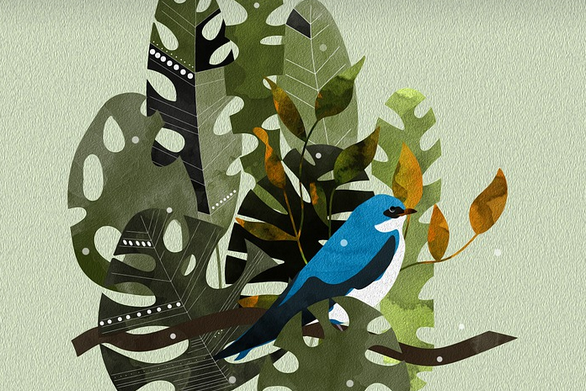
Greenery In Interior Design: Bringing The Outdoors In
A Touch of Nature for a Tranquil Home
There’s something inherently calming about being surrounded by nature. It’s no wonder that bringing greenery into our homes has become such a popular trend, especially since we spend so much time indoors these days. The lushness of plants, the fragrance of flowers, and the gentle rustling of leaves all offer a welcome escape from the hustle and bustle outside. But incorporating greenery into your home design isn’t just about aesthetics; it can actually enhance our mental wellbeing and create a more peaceful haven.
While traditional designers focused on showcasing furniture and artwork, the latest trend is to embrace natural elements like plants and flowers for a truly holistic approach. This shift in perspective reflects a growing understanding of how being around nature directly impacts our emotional, physical, and mental well-being.
Why Greenery Matters
There are numerous reasons why incorporating greenery into your interior design is such a powerful design concept. Let’s delve deeper into the benefits:
Improved Air Quality: Plants act like natural air purifiers, filtering out pollutants and releasing oxygen. This helps to improve indoor air quality, especially in urban environments where air pollution can be high.
Stress Reduction: Studies have shown that being around plants can reduce stress levels and decrease anxiety. The calming effect of nature has an undeniable impact on our mental health.
Increased Productivity and Creativity: The presence of greenery in the workplace is known to boost productivity, focus, and creativity. A little dose of nature can be a powerful tool for enhancing performance.
Calming Effect: Plants add a sense of calm and serenity to any space. Their gentle movements, soft colours, and textures contribute to a more inviting atmosphere, making the room feel more relaxed and comfortable.
Choosing the Right Plants
With a wide array of plants available, choosing the right ones for your home can be overwhelming. Here’s a quick guide:
Low-Light Tolerant Options: For spaces with limited natural light, Snake plants, ZZ plants, Pothos, and Cast Iron Plants are all excellent choices. Their ability to thrive in low light makes them perfect for any indoor setting.
Air Purifying Champions: Snake plants, Spider plants, and peace lilies are known for their air purifying capabilities. They effectively filter out toxins from the indoor air, making your home a healthier environment.
Statement Pieces with Impact: For those who want to make a bold statement, Monstera deliciosa or Ficus Benjamina’s large leaves add an instant tropical feel and bring life into any corner of the room.
Flower Power: While not suitable for every space, flowering plants like orchids, proteas, or lilies inject vibrant bursts of color and fragrance. Just make sure you choose those that thrive in your home’s humidity level and light conditions.
Placement Tips & Tricks
Placing your plants strategically within your interior design is crucial for creating the best impact.
Living Areas: If you have a living room or family area, placing potted plants on coffee tables, shelves, or end tables can brighten up the space and offer an inviting focal point.
Dining Tables: For dining areas, consider adding a few smaller leafy plants to your table centerpieces for a touch of natural elegance. The visual appeal will elevate your mealtime experience.
Bedroom Sanctuary: A bedroom is where we retreat and unwind. Introducing a plant or two can offer a calming effect before sleep.
Care & Maintenance
While the beauty of plants is undeniable, taking care of them is an equally essential aspect of integrating greenery into your interior design.
Light Requirements: Different plants have different light requirements. Some thrive in direct sunlight, while others prefer softer, indirect light.
Watering Needs: Overwatering is a common mistake, so it’s crucial to learn your plant’s unique needs and understand how much water they require. The soil should feel dry before watering again.
**Humidity Levels: Some plants require more humidity than others. If you notice your plant drooping or leaves are curling, consider adding a humidifier or adjusting your environment for optimal moisture.
Beyond the Basics: Creative Ideas
The possibilities for incorporating greenery into your interior design are endless. Let’s explore some creative ideas to take it further:
**Vertical Gardens:** For limited space, wall-mounted planters or vertical garden systems offer an efficient and stylish way to display plants.
**Terrariums:** Miniature gardens in glass containers create a unique and visually appealing centerpiece for shelves or desks. Experiment with different textures and colors of soil, moss, and succulents for a captivating effect.
**Floating Shelves:** Create an air of sophistication by arranging plants on floating shelves. This minimalist approach adds visual interest without taking up too much space.
**Green Wall Systems:** For those who desire a statement piece, consider installing a green wall system in your home. From small-scale to large-scale designs, green walls offer an impactful way to bring nature indoors.
Conclusion: The Power of Nature within Home Walls
Greenery is not just a trend; it’s a powerful design tool that can transform your house into a truly welcoming and soothing space. By incorporating plants and flowers into your home design, you invite nature’s calming energy to fill your living spaces, boost your well-being, and create a more peaceful haven.